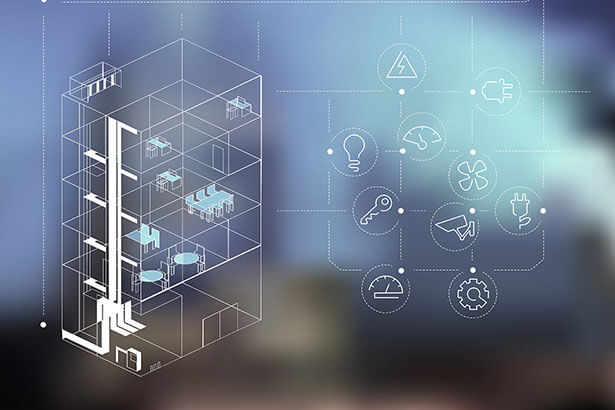
Smart Building HVAC Automation is Driven by Sensors
Cost management is top-of-mind for many facility and building managers, and HVAC systems are responsible for a significant portion of operating expenses. Smart building automation has a role to play in keeping these costs under control. It can prevent over-cooling and under-heating, and can reduce system downtime and maintenance costs by tracking trends and initiating predictive maintenance. The key is to use the right monitoring and control technology, like differential pressure sensors and PM stepping motors.
The Challenge of Providing a Comfortable Environment
Most people have experienced being in a building that felt either too hot or too cold. There might be drafts, the environment could feel stuffy, or the air may be dry enough to cause static shocks.
There are two problems: thermal comfort depends on more than just air temperature, and the air is heated or cooled in a place that might be some distance from the space people are occupying.
Air temperature is only part of thermal comfort. Humidity and air velocity, along with activity levels and clothing being worn, all affect how the temperature of the space feels. In addition, low air velocities can create the sensation of stuffiness.
The other issue is that, especially in a large space, the air will have warmed or cooled on its journey from the heat exchanger. This might be addressed by raising or lowering the temperature beyond the targeted range, but the downside is that occupants close to the source will be left uncomfortable.
Managing Temperature Through Airflow
Modern HVAC systems address thermal comfort through the variable air volume (VAV) approach. This is where the air is conditioned to a set temperature and airflow is adjusted to provide more heating or cooling. (In the alternative approach, Constant Air Volume, (CAV), fans run at a fixed speed and the air temperature is adjusted up or down.)
To be really effective, a large HVAC system does more than control the speed of the main fan. It uses VAV terminals at strategic points throughout the distribution system. These boxes adjust airflow into individual branches based on a local thermostat that governs movement of a damper. For increased sophistication and precision, VAV terminals may incorporate heating elements to provide a localized boost to the air temperature.
Adding Intelligence to the Smart HVAC System
Local or zone control of airflow helps building occupants feel more comfortable, but it’s not the whole solution. Since thermal comfort depends on multiple factors, adjusting airflow to a thermostat signal won’t eliminate all complaints: it’s still likely that people will feel too cold or too warm or will complain of stuffiness. This is where multiple sensors can support smart HVAC systems.
Combining temperature and humidity measurement with differential pressure sensors and even CO2 monitors provides the HVAC control system with the data needed to optimize airflow. Independent VAV control, achieved through reliable and repeatable damper actuators, manages the local environment to maximize occupant thermal comfort levels.
Addressing Downtime and Maintenance
Sensors on and feeding into the VAV control don’t just make the system more energy efficient. They also provide data for scheduling predictive maintenance and reducing unplanned downtime. Differential pressure sensors have long been used to monitor filter conditions but can also measure airflow between discrete locations. Should this deviate from normal levels, an alert can initiate an inspection to determine what’s wrong.
Likewise, should other HVAC operating parameters change unexpectedly, humidity for example, the control system can signal a need for inspection.
Taking this further, rather than scheduling maintenance based on the calendar, it can be planned based on trends monitored by the system. This not only reduces unplanned downtime caused by unexpected problems, but can lower the total HVAC-related maintenance workload.
Lower Costs with Smart HVAC Systems
In large buildings, and many smaller ones too, it’s difficult to satisfy the heating and cooling requirements of every occupant. Struggling to keep everyone comfortable results in the system working harder than it should, which is not an energy-efficient way to operate. What’s more, the increased load and usage tends to shorten component life, increase maintenance costs, and potentially lead to more breakdowns.
VAV HVAC systems improve things but are at best an imperfect solution. Full optimization can only be achieved by using an array of sensors that generate comprehensive data on environmental conditions and system operation. These sensors can feed data into the smart HVAC system, or even the building automation system, and be used for local airflow optimization through precise control of damper actuators. This results in lower energy consumption, and lower maintenance costs.
MinebeaMitsumi makes differential pressure sensors for VAV damper control. We also make PM stepping motors used for damper actuation. Working through NMB Technologies, a part of the MinebeaMitsumi organization, we can supply HVAC sensors and controls, and offer local engineering resources to provide customized solutions for optimizing performance. Contact us to learn more about the things we make, our technology expertise, and how we can help building managers lower their energy and maintenance costs.

